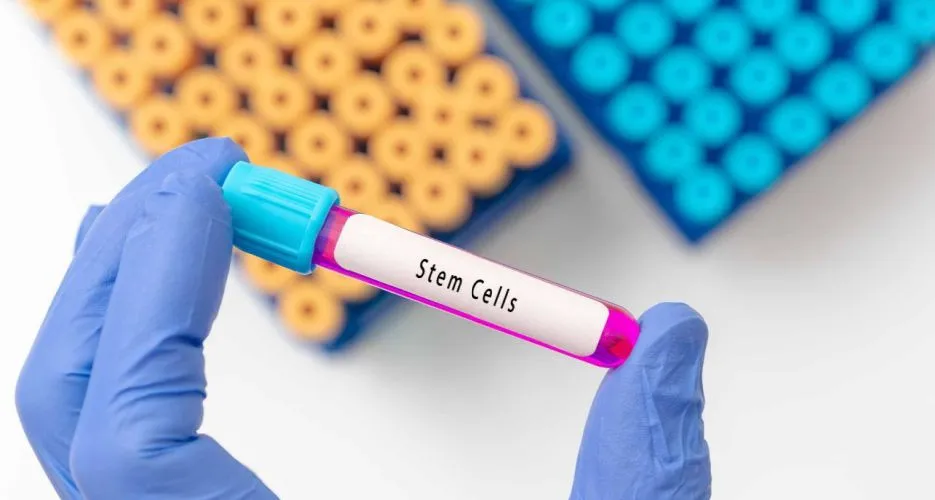New Tool To Better Identify Prognosis For MDS Patients

The International Prognostic Scoring System- Revised or the IPSS-R is used to categorize and help with therapeutic decision making for Myelodysplastic Syndromes (MDS) patients. With this scoring system, patients are put into 1 of 5 groups ranging from very low risk to very high risk of mortality and transformation to Acute Myeloid Leukemia (AML). This score is calculated by looking at cytogenetic abnormalities (abnormal structure or number of chromosomes) and hematologic parameters.
What is the IPSS-M?
In a recent study we are introduced to the International Prognostic Scoring System- Molecular or the IPSS-M, a new clinical-molecular prognostic scoring system. The IPSS-M uses genomic profiling, cytogenetic profiling and hematologic parameters to deliver prognosis categorization and help with therapeutic decision making. With the IPSS-M, patients are categorized into 1 of 6 risk groups ranging from very low to very high. How is this new scoring system different from the IPSS-R you may already be familiar with and what is its purpose? Let’s break it down.
How is the IPSS-M different from the IPSS-R?
The IPSS-M uses different factors to determine a patient's risk category and prognosis than the IPSS-R. The first factor used in the IPSS-M is genomic profiling. This is a method of study that is used to understand the genetic makeup of an individual or to try to understand specific cell types and how their genes interact with the environment and each other. The second is cytogenetics, which is the study of changes in chromosomes that may signify a genetic disease or type of cancer. The third is hematologic parameters which refers to red and white blood cell counts and hemoglobin concentration.
The IPSS-M uses all of the above factors in determining risk categorization and prognosis while the IPSS-R uses only cytogenetic abnormalities and hematologic patterns.
What is the purpose of the IPSS-M?
With the addition of genomic profiling and a more complete cytogenetic profile, the IPSS-M can be more thorough in its analysis for each individual patient.
Research Methods and Findings
To develop the IPSS-M, researchers collected samples from 2,957 MDS patients to profile mutations in 152 genes. Variables were then assessed for any association to Leukemia-free survival, leukemic transformation, and overall survival. Independent prognostic variables were then determined.
In their research, they found one oncogenic alteration (a microenvironment that promotes tumor progression) in 94% of MDS patients. They found that the TP53 multihit, FLT3 mutations, and MLL PTD were top genetic predictors for adverse outcomes, while SF3B1 mutations were predictors for favorable outcomes. Those favorable outcomes were modified by comutations. All factors combined lead to unique risk scores for each patient. A total of 46% of patients in the study were recategorized when using the IPSS-M.
The IPSS-M is a valuable new tool for patients to help aid in clinical decision-making and risk categorization so they can best treat and understand their MDS.
The International Prognostic Scoring System- Revised or the IPSS-R is used to categorize and help with therapeutic decision making for Myelodysplastic Syndromes (MDS) patients. With this scoring system, patients are put into 1 of 5 groups ranging from very low risk to very high risk of mortality and transformation to Acute Myeloid Leukemia (AML). This score is calculated by looking at cytogenetic abnormalities (abnormal structure or number of chromosomes) and hematologic parameters.
What is the IPSS-M?
In a recent study we are introduced to the International Prognostic Scoring System- Molecular or the IPSS-M, a new clinical-molecular prognostic scoring system. The IPSS-M uses genomic profiling, cytogenetic profiling and hematologic parameters to deliver prognosis categorization and help with therapeutic decision making. With the IPSS-M, patients are categorized into 1 of 6 risk groups ranging from very low to very high. How is this new scoring system different from the IPSS-R you may already be familiar with and what is its purpose? Let’s break it down.
How is the IPSS-M different from the IPSS-R?
The IPSS-M uses different factors to determine a patient's risk category and prognosis than the IPSS-R. The first factor used in the IPSS-M is genomic profiling. This is a method of study that is used to understand the genetic makeup of an individual or to try to understand specific cell types and how their genes interact with the environment and each other. The second is cytogenetics, which is the study of changes in chromosomes that may signify a genetic disease or type of cancer. The third is hematologic parameters which refers to red and white blood cell counts and hemoglobin concentration.
The IPSS-M uses all of the above factors in determining risk categorization and prognosis while the IPSS-R uses only cytogenetic abnormalities and hematologic patterns.
What is the purpose of the IPSS-M?
With the addition of genomic profiling and a more complete cytogenetic profile, the IPSS-M can be more thorough in its analysis for each individual patient.
Research Methods and Findings
To develop the IPSS-M, researchers collected samples from 2,957 MDS patients to profile mutations in 152 genes. Variables were then assessed for any association to Leukemia-free survival, leukemic transformation, and overall survival. Independent prognostic variables were then determined.
In their research, they found one oncogenic alteration (a microenvironment that promotes tumor progression) in 94% of MDS patients. They found that the TP53 multihit, FLT3 mutations, and MLL PTD were top genetic predictors for adverse outcomes, while SF3B1 mutations were predictors for favorable outcomes. Those favorable outcomes were modified by comutations. All factors combined lead to unique risk scores for each patient. A total of 46% of patients in the study were recategorized when using the IPSS-M.
The IPSS-M is a valuable new tool for patients to help aid in clinical decision-making and risk categorization so they can best treat and understand their MDS.

about the author
Mary Arnett
Mary joined HealthTree in 2022. She is now the AML & MDS Patient Engagement Manager. She is passionate about giving power to patients through knowledge and health education. If she can help one patient feel more confident participating in discussions with their healthcare team and making treatment decisions, she will feel like she has succeeded. When she isn't advocating for patients, she loves being an aunt, attending concerts, and experimenting with new recipes in the kitchen.
More on Treatment Advances
Trending Articles
Get the Latest Myelodysplastic Syndromes Updates, Delivered to You.
By subscribing to the HealthTree newsletter, you'll receive the latest research, treatment updates, and expert insights to help you navigate your health.
Together we care.
Together we cure.
3x Faster.










